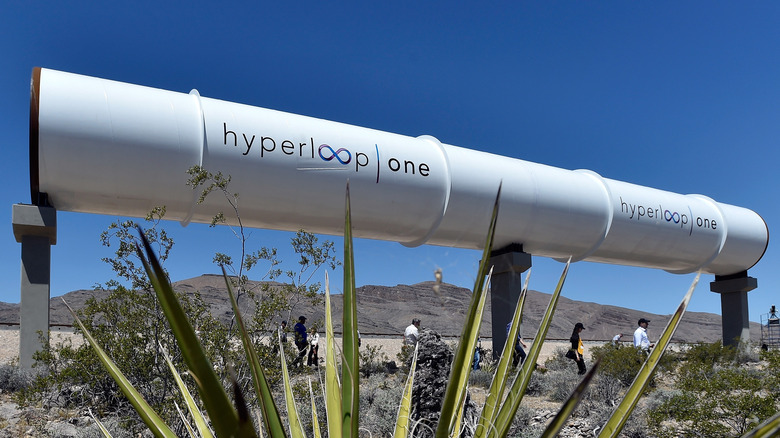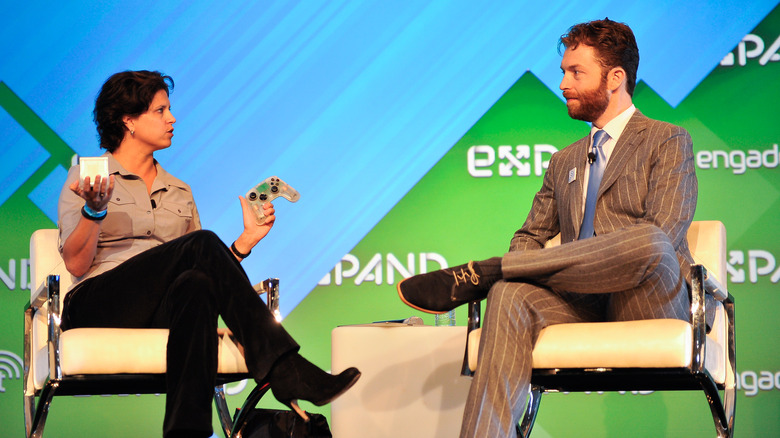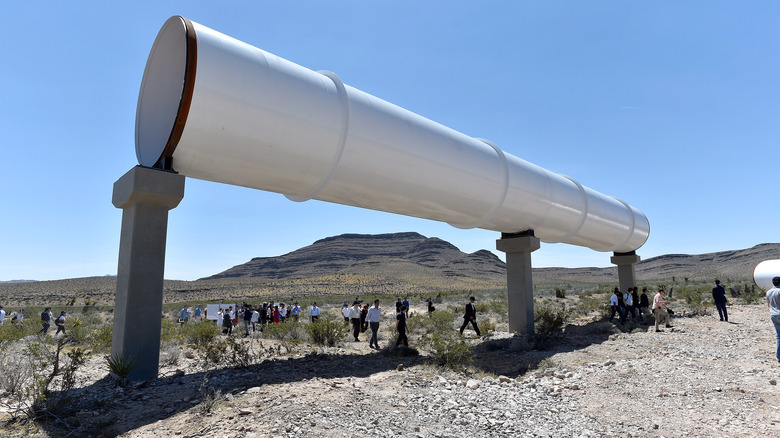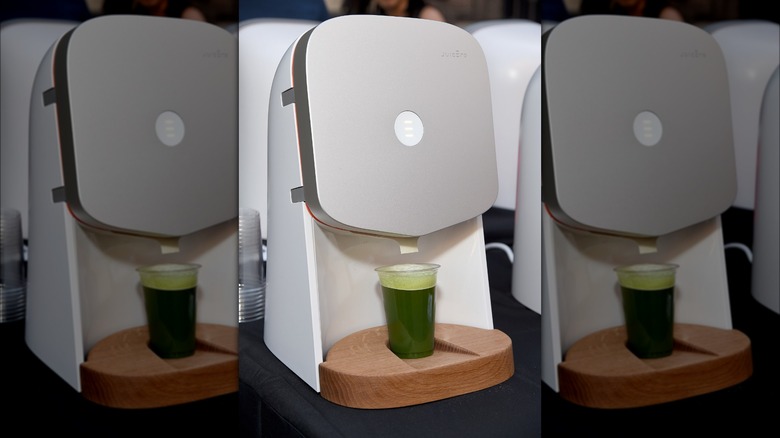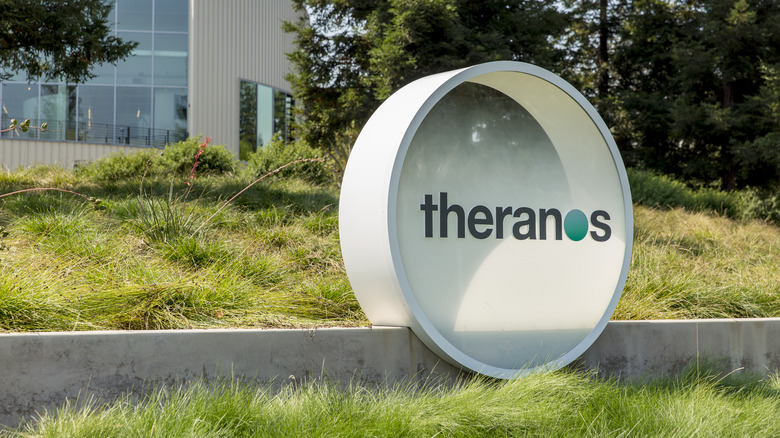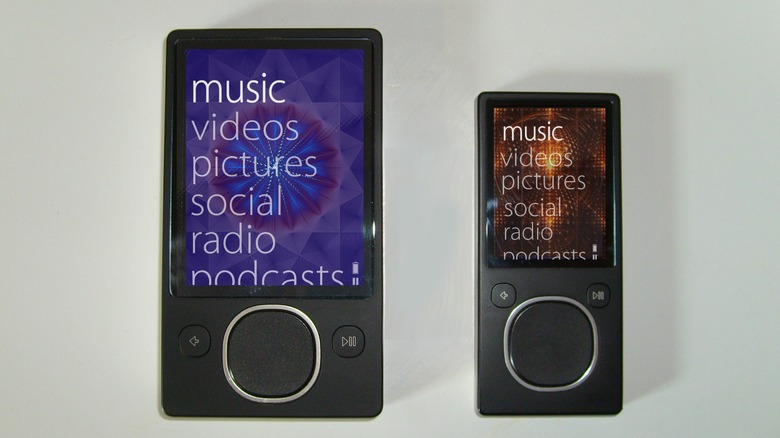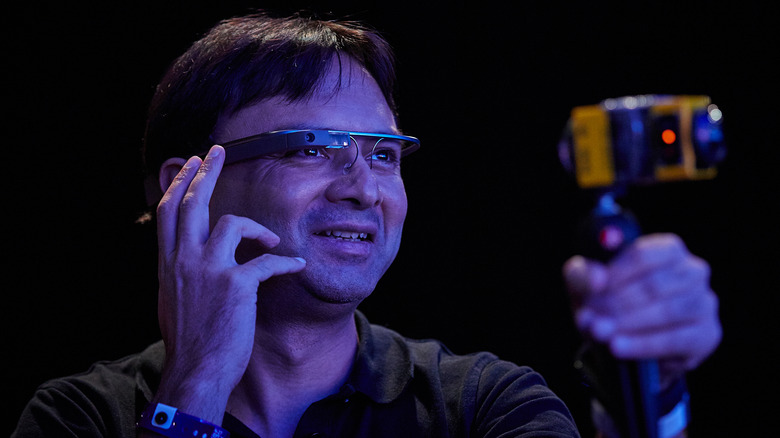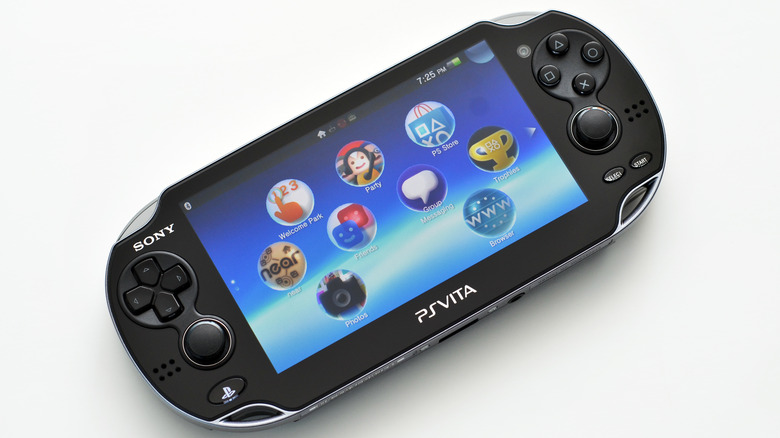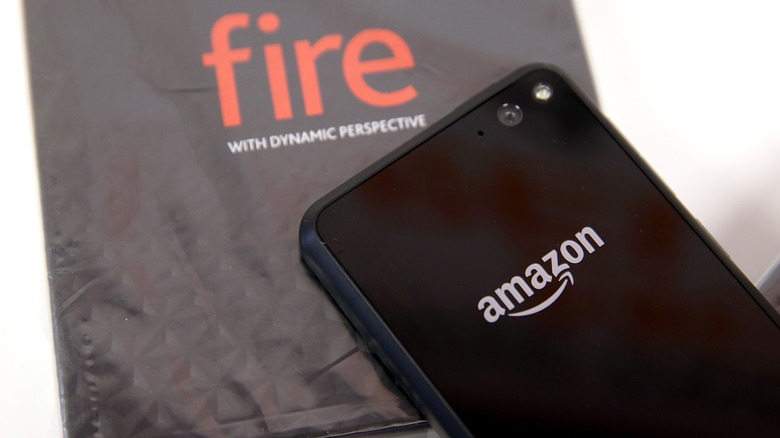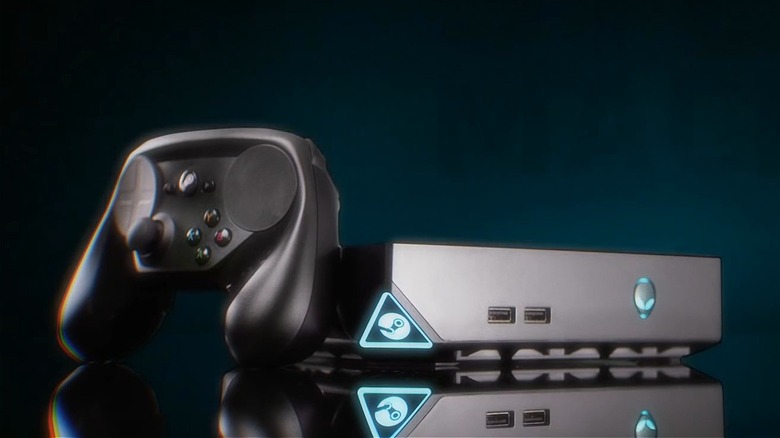10 Hyped Pieces Of Tech That Flopped
Necessity is the mother of invention, but customers are often the arbitrators of an invention's success. Companies generally only greenlight the research, development, and manufacturing of products they think will be profitable -– even if the invention isn't that good or doesn't improve on previous products. Out of all the tools that help guarantee a return on a company's investments, hype is both the biggest and most dangerous.
To entice as many potential customers as possible, companies want to make products that sound like the greatest invention since sliced bread. Occasionally, a piece of technology meets or even exceeds these promises, but more often than not, the hype overshadows the final product. We can often blame the marketing department for making promises the development wing can't keep, but sometimes a device or service is so horrible that publicity is the only thing it has going for it.
While overblown exposure is by no means a death knell for an invention, it certainly makes the hype surrounding it all the more noteworthy. And sometimes laughable. Here are 10 pieces of technology that flopped and could have peacefully faded into obscurity if it weren't for the overwhelming hype that preceded their failures.
Ouya
Playing video games costs a lot of money, thanks in no small part to the swelling price of consoles and games. You need to spend an average of $70 per game if you want to play something on the Xbox Series X or PlayStation 5, and that's in addition to the $500 you need for a console — more if you live in certain countries. Some people have tried challenging game pricing models, which earned them massive internet brownie points, but intentions only get you so far.
The Ouya was touted as a revolutionary video game console. The device was supposed to be powerful despite being small enough to fit in a pocket, and more importantly, it was designed around saving gamers money. When it was released, the Ouya cost around $100 per unit, and its games were all supposed to be significantly cheaper than titles on rival consoles. Another prominent feature was the Ouya's emphasis on demos. All of its games were free to try, so if you don't like a game, then you don't lose any money.
Despite being one of the most highly funded projects on Kickstarter, the Ouya's 2013 release was a disaster. The console's hardware gave it the same graphical oomph as a smartphone -– a far cry from the capabilities of the PlayStation 4 and Xbox One –- and its starting lineup of games lacked staying power. In addition, Ouya's creator, Julie Uhrman, inadvertently sabotaged the Ouya's reputation whenever she talked about it, and Kickstarter backers had a harder time obtaining copies than regular customers. These factors used up any goodwill the Ouya had created for itself, and the device faded into irrelevance.
Hyperloop
Once upon a time, Elon Musk was on top of the world. He has been the face behind numerous hi-tech inventions, including the Tesla line of electric vehicles. However, not every idea he's had has turned to gold, and we don't just mean buying Twitter and renaming it X.
Musk claimed his Hyperloop would be the next big evolution in mass public transportation. The Hyperloop cab was supposed to run along a low-pressure tunnel and achieve speeds of over 600 mph thanks to a lack of air resistance and friction. For the sake of comparison, that's more than double the max speed of the world's fastest train. Moreover, Musk boasted the Hyperloop would be immune to weather-based delays and collisions, all using very little power. Think of the Hyperloop as a large-scale pneumatic tube system and you should get the picture.
Even though the Hyperloop was supposed to use physics to rocket passengers from NYC to Washington DC in under 30 minutes, actual physics got in the way of that vision. Many companies popped up to help make Musk's dream a reality, and early tests propelled the Hyperloop up to 107 mph. While that sounds promising, subsequent prototypes quickly plateaued. The Technical University of Munich (TUM) Hyperloop program holds the record of achieving 288 mph — unfortunately, theteam was aiming for 373 mph.
The Juicero Press
Most people enjoy a nice glass of fruit juice, but refrigerated cartons made from concentrate have nothing on a freshly squeezed beverage. One method is to cut the fruit into tiny bits and squeeze out all the liquid using a small hydraulic press. This technique is known as cold press juicing and has been popular for many years. Plenty of manufacturers offer cold-press juicers, and they all have one thing in common — they're essential to the juicing process.
The Juicero Press was advertised as a leap forward in the cold press juicing craze. All a user had to do was insert a packet of pre-chopped fruit into the device and connect it to their local Wi-Fi. Then they could have fresh-squeezed juice on demand. Customers could start with the (not-so) low entry fee of $400, but that was only the start of the Juicero Press' cocktail of criticisms.
The more people looked at the Juicero Press, the more issues they found. To buy the device's packets, users had to sign up for subscription delivery, and many subscribers eventually discovered that the Juicero Press itself was superfluous to the juicing process. All one had to do was open the Juicero sachet, scoop out the fruit, and squeeze it with their bare hands. The Juicero Press was the laughing stock of the cold-press community and shut down quickly, demonstrating that in order for an idea to bear fruit, an alternative caveman approach shouldn't provide the same results for less money.
Theranos
Everyone needs their blood drawn at least once in their lives, and many people need to do so multiple times a year for health reasons. It's annoying and unpleasant, especially since lab technicians sometimes need to fill up multiple vials per visit. It really makes you wish someone invented a real-life Tricorder – or at least a blood test technique that requires a lot less blood.
That's why Theranos was once on the lips of almost every health professional. The company was founded by a 19-year-old Elizabeth Holmes, who promised it could do for medical blood tests what glucose monitors did for watching blood sugar levels. With just a literal drop of blood, users could run a lipid panel or check their vital organs, thereby making blood tests cheaper and more accessible, especially to people with trypanophobia. However, that's all Theranos was: a promise.
Once medical experts started scrutinizing the technology behind Theranos, they quickly discovered it was all smoke and mirrors founded on shoddy science. A professor at Stanford University, John Ioannidis, wrote a paper on Theranos' tech and how it hadn't undergone any peer-reviewed research. Other medical professionals, including University of Toronto Professor Eleftherios Diamandis, mirrored these criticisms. Allegations of fraud spread quickly, not helped by numerous reports of FDA violations.
Theranos hemorrhaged support, public goodwill, and money until it shut down in 2018, but then the news changed from bad to worse. Not only was Theranos' tech a fraud, but Holmes herself had committed fraud, specifically wire fraud. She was sentenced to 11 years and three months in a federal prison camp in Bryan, Texas.
Zune
MP3 players were a revolution for music lovers. Granted, people have been able to take their favorite albums on the go for a long time thanks to Walkmans and Discmans, but MP3 players let listeners customize playlists with digital copies of songs. Apple cornered the market early with its iPods, but that didn't stop other companies from providing alternatives, even when it was pointless.
The Zune, co-developed by Microsoft and Toshiba, was designed to challenge Apple's iPod for the MP3 market crown. Microsoft was so confident in the Zune's capabilities that the company championed it as the iPod killer. Over the course of several years, Microsoft released several generations of Zune, each with increasing hard disk space, and even included Xbox 360 integration and an HD LCD screen. However, just like the Kinect, nothing Microsoft did for the Zune worked.
Despite all of Microsoft's efforts, Apple and its iPod kept a firm grasp on their overwhelming share of the market, mostly because Microsoft's efforts didn't amount to much. Timing was a huge factor, as the iPod had already solidified itself as a major player in the MP3 market, and Microsoft's unclear advertising didn't help much, as the Zune didn't innovate much and was more or less an iPod with different branding. To the mainstream music-listening audience, the iPod was all they needed, and since many people already owned one, why would they buy a different MP3 player with the same features?
Google Glass
Many video games use heads-up displays (HUDs) to provide key information. Need to know the quickest route to a quest location? The minimap is usually in a screen corner. Have trouble hearing what a character is saying? Closed captions are often provided at the bottom of the HUD. If only real life had HUDs, or at least a device that provides HUDs.
Google Glass was a promising concept for augmented reality glasses that never entirely left the prototype phase. Anyone who purchased a pair for $1,500 became a Glass Explorer and got to help test out the device for the projected mass release. Each Google Glass came with a camera, a touchpad on its side, and an LED display that projected information onto the glass. What information? Anything an app developer could think of, from facial recognition software to apps that translate foreign languages right before wearers' eyes. The possibilities were endless. Unfortunately, so were the problems.
Almost immediately after its release, critics were concerned that Google Glass could potentially break privacy laws in certain countries or distract drivers. Plus given their price tags, anyone who wore their Google Glass in public became a high-risk mugging target.
Eventually, Google just gave up on its Google Glass project and stopped producing the AR device, but it still lives on in spirit. Google's most recent pair of AR glasses is a stripped-down Google Glass that narrows its scope to just closed captioning and translation. This project could potentially revolutionize communication, but only time will tell if it avoids the same pitfalls of Google Glass.
Zeo Sleep Monitor
Many people hate waking up early, but we all have jobs to do. The best solution to this issue is going to bed early and waking up in a way that doesn't leave us exhausted, so a start-up called Zeo developed a headband that monitored the user's brain as they slept. This device was paired with an alarm clock that could determine the best time to wake users up by scanning their brainwaves.
The logic behind Zeo's thinking was that people are groggier if they are jolted awake during a deep stage of sleep than when they are woken up during a light sleep stage. Therefore, Zeo's headband told the alarm clock the best period to wake its wearer, rather than just aiming for a predetermined time regardless of REM state. As an added bonus, the headband also linked up to Zeo's server and gave users personalized emails that summarized their sleep habits and provided advice on how to improve their slumber.
Unlike many of the other entries in this article, Zeo's product did everything right. The company's sleep headband functioned as intended, so what went wrong? Zeo just ran out of money. According to the company's CEO, Dave Dickinson, Zeo's business model was not equipped to handle customer issues, pay physicians, deal with retailers, and cover manufacturing. Other problems cropped up, such as customer complaints about the invasiveness of the headband, but if Zeo just had more money, it might still be in business today.
PlayStation Vita
Nintendo is a dominant force in the handheld gaming market. Developing consoles that gamers can play on the go is in the company's blood, and its offerings outlasted the competition. Microsoft never bothered trying to develop a handheld console, and Sony gave up after producing two portable consoles –- it's questionable if the PlayStation Portal counts — which is a shame since the PlayStation Portable was a great first outing.
The PlayStation Vita was a huge advancement over the PlayStation Portable's solid design. Not only did the Vita boast better graphics and processing speeds, but its screen was bigger and included a capacitive touchscreen, no less). Plus, Sony managed to squeeze in two joysticks and 3G wireless functionality. Not even the console's main rival, the Nintendo 3DS, had these features, yet the dual-screened contender won out in the end.
The Vita flopped because, despite its advantages, the handheld fought a Sisyphean battle. Right out of the gate, the Vita saw poor sales numbers, especially in the U.S., due to its high price tag when compared to the 3DS. Instead of doubling down on supporting the Vita, Sony pulled the rug out from under it. Many studios and publishers decided to produce games for more successful consoles, Sony included. All of this quickly turned the PS Vita into a veritable ghost town of a device, although that isn't to say the Vita is completely unloved, as plenty of gamers still hail the console as Sony's best failure.
Amazon Fire Phone
Few companies do online shipping quite like Amazon. The digital store has seemingly every product under the sun and its success has spurred on several business ventures under the Amazon banner. Amazon Prime Video, for instance, has produced must-watch programs such as "The Legend of Vox Machina" and "The Man in the High Castle." Amazon Fire Phone, however, wasn't anywhere near as successful.
The Amazon Fire Phone, as its name might suggest, was envisioned as a successor to the Kindle Fire tablet. The Fire Phone sported some pretty novel additions, such as cameras in each corner that could track viewers and dynamically scale the UI to deliver pseudo-3D perspectives. Since it was an Amazon-branded product, the Fire Phone also could use its main camera to identify various products and find them on the Amazon marketplace. Unfortunately, cameras and their functions can only carry a phone so far.
Reviews were not kind to the Amazon Fire Phone and called it a middling product. People criticized its underwhelming hardware, the lack of Bluetooth LE support, and questioned the phone's durability. Essentially, the Fire Phone was an average device with a higher-than-average price point, which didn't do much to win customers over. The Fire Phone's exclusivity deal with AT&T in the U.S. hurt it even more. Ultimately, the Amazon Fire Phone didn't set itself apart from the competition — even with its pseudo-3D functionality — and Amazon ceased production just one year after the Fire Phone's release.
Steam Machine
If you want to buy a PC game, odds are you will get it through Steam. This digital storefront has a reliably huge library of indie and AAA titles, but it's only a launch platform — you need to make sure your computer meets the necessary specs. Few, if any, gaming PCs have the same turnkey reliability as a console, and those that do generally haven't been as successful.
Long before Valve manufactured the Steam Deck, the company tried to bring PC gaming to the living room with the Steam Machine. These consoles were fully digital platforms that ran on a heavily modified Linux environment dubbed SteamOS. The goal was simple — let Steam users download games onto the console and play them on the TV. Each Steam Machine even included a specialized controller that accommodated standard dual-analog stick control schemes and mouse-and-keyboard ones. So what went wrong?
Sadly, the SteamOS proved to be an impossible hurdle due to its Linux origins. While plenty of games can run on Linux PCs, many more cannot –- Steam games that can only run on Windows were incompatible with the SteamOS. To make matters worse, Valve rushed Steam Machines out the door before they finalized the hardware. The last nail in the Steam Machine's coffin was Valve's Steam Link, an app that lets users run games on a PC and stream them to any compatible screen. Why pay hundreds of dollars for an unproven console-shaped PC when you could use your computer to beam a game to a TV at no extra charge?
